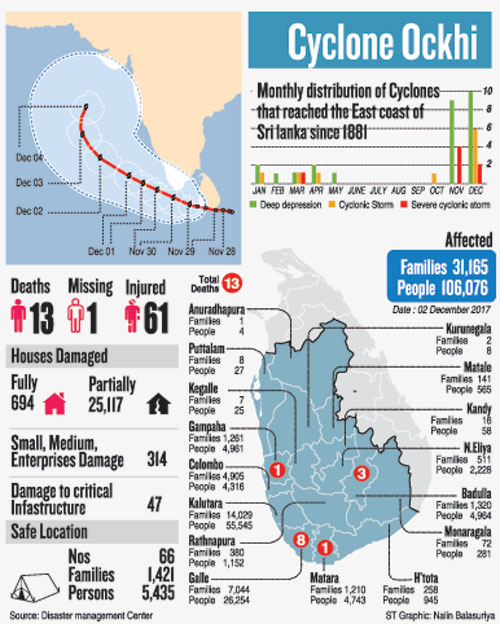News
One depression gone, but another on the way
Met Dept. says its course being tracked and public will be duly warned
Terms such as storm, cyclone should not be used loosely to describe what hit the country on Wednesday, they say
Disaster Management Minister, Dept. Officials assert that adequate warnings were given of changing weather patterns from Tuesday onwards
This week’s deep atmospheric depression that caused havoc has moved away from Sri Lanka but another disturbance is brewing on the eastern side of the Bay of Bengal and is expected to move across the northern tip of Sri Lanka on Tuesday, said Met Department Director Forecasting Anusha Warnasooriya.
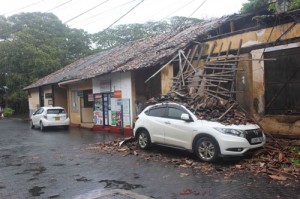
Galle Fort
The public will receive due warning based on monitoring of its progress, she vowed. On Friday, the Sri Lanka Red Cross Society said its own disaster management centre was tracking another possible storm that could impact eastern and northern Sri Lanka this week with heavy rains and winds. The predictions were based on weather modules, it said, but the trajectory could change.
This depression is still at initiation level in the Bay of Bengal, said Tharmaratnam Pratheepan, Officer-in-Charge of the Jaffna Met Department. It was too early to predict its impact.
Meanwhile, what hit Sri Lanka from Wednesday was a depression that developed from low to deep very rapidly (within 24 hours), said Met Department Director General S. Premalal. But it was neither a tropical storm nor a cyclone. It can only be categorised as strong winds with heavy rainfall. When it did transform into a cyclone, it had moved away from the island.
“Sometimes it can take days to turn from low pressure to depression but this passed those stages in a matter of hours,” Mr Premalal said. “The same thing happened in 2011. That’s why we issued alerts and warnings from Tuesday.”
The alerts had moved from amber–the first one was on Tuesday morning–to red by 2.30 p.m. on Wednesday. Another red alert was issued at 8 p.m., when the full force of wind and rain was being felt. Separate notices were made out to naval and fishing communities
“We issued four to five warnings throughout the day yesterday,” Mr Premalal told a news conference on Thursday. “And we told the fishing community there could be winds of 90-100 kmph at times.”
Journalists strongly questioned the failure of the Met Department and others under the Ministry of Disaster Management to convey the message of severe weather adequately to the public. Mr Premalal responded that the situation had developed suddenly and was not part of the storm system reported in international media.
“These are sudden changes in the weather,” said Disaster Management Minister Anura Priyadharshana Yapa, who chaired the briefing. “Soon after we got the information, we informed the particular [sic] people. You can see from our warnings. We warned the fishermen first.”
The Minister absolved himself of blame by saying the fishing community was not under his purview and that the subject Minister had issued a statement saying his officials had been instructed not to send boats out. “We told the fishermen and the Navy,” he insisted. “The harbours had been advised not to let the boats go from those locations.”
“How do we warn people?” he asked. “We warn them through the media. We have given enough and more warning about possible rainfall as well as wind pattern and we have given it to all Government agencies. The rain did not start yesterday but around five days ago and we have seen heavy clouds hanging around our skies and rain comes down.”

Hambantota - Pix by Krishan Jeewaka Jayaruk, Rahul Samantha Hettiarachchi, Sarath Siriwardana, Thusitha Kumara de silva, Sirangika Lokukarawita and Gamini Mahadura
The winds passed through Sri Lanka within three or four hours, he said. “I don’t know what else to do because you cannot give warnings privately, to individuals. You warn through the media and urge people to take that warning seriously and take precautionary measures.”
“A large number did not go out to sea, otherwise thousands or hundreds should have been affected,” the Minister said. “We can gather that some had ignored the warnings but an investigation will have to be done. I don’t like to say anything because the Fisheries Ministry has to do that.”
The Met Department urged the media not to use weather terminologies such as storm or cyclone loosely. “I don’t think the wind exceeded 100kmph anywhere,” Minister Yapa also said. “It’s only when it exceeds 100kmph that it’s a cyclone or storm. If that were the case, we will say so.”
| Bilingual forecasts continue from Met Dept sans Tamil translators | |
| The Dept of Meteorology still has no full-time Tamil translators and there has been no Tamil language forecast or even, severe weather warnings, since Nov.21.The Scientific Service cannot recruit translators as there is no cadre for them. Agencies must, therefore, receive assistance from the dedicated Translators Service. However, while his office has repeatedly asked for Tamil language translators, none have been forthcoming, said Director General S. Premalal. This could be the result of a general shortage of relevant personnel in the Translators Service.”Translations at the Met Dept is a 24-hour job,” Mr Premalal explained. The Translators Service do not have personnel who worked throughout the night. So, updates, severe weather warnings or, alerts that came after-hours, could not be issued in Tamil, which was an added complication. “We usually have around two-and-a-half hours to issue a tsunami warning,” Mr Premalal explained. “How can we translate it if we don’t have Tamil officers?” He had made representations in this regard even recently. “We need at least 4 Tamil translators in our forecasting office to operate shift duties,” he continued. “If there is a tsunami warning at midnight, who will translate it?” Some parties have threatened to file action against the Dept for not following the State’s trilingual policy. “But we are faced with these impediments,” he said. The Met Dept’s website needs constant updating. “We cannot even pre-write translations, as we need to keep changing our wordings, to explain changes in the weather,” Mr Premalal said. He vowed to take up the issue anew and request the required number of translators from the Government. |
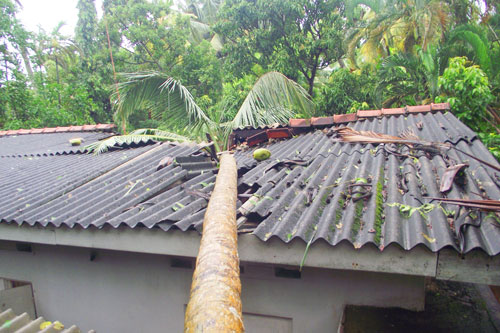
Aluthgama
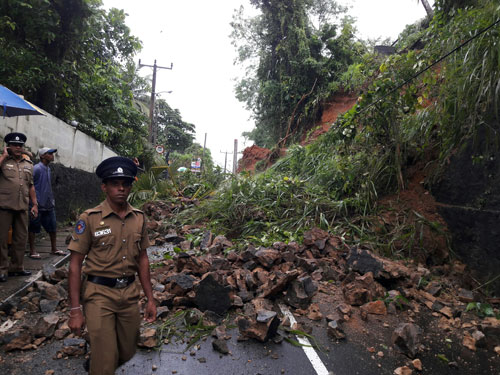
Matara Eliyakanda
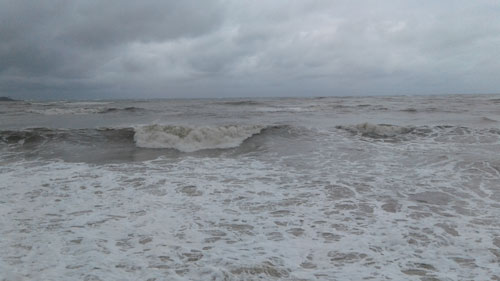
Beruwala rough sea
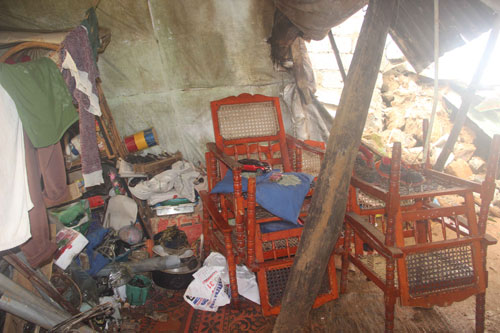
Nuwara Eliya
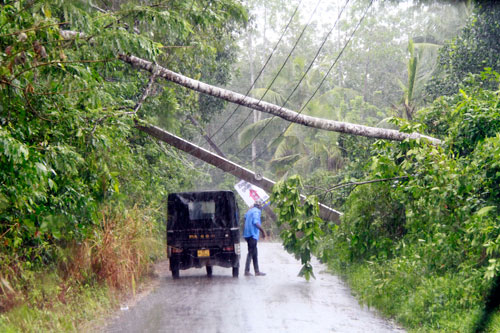
Dodanduwa
